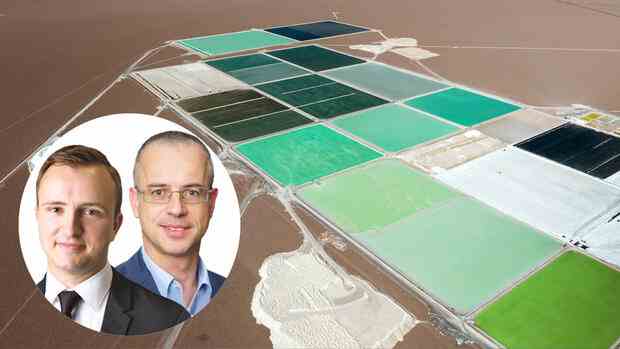It was based on three pillars: securing access to raw materials, developing domestic deposits in the EU and reducing general raw material consumption. All three approaches are essentially correct to this day. The problem is that the EU never lived up to its own goals.
Many laws and initiatives have been introduced since then: the Conflict Minerals Ordinance in 2017, the European Green Deal in 2019, the European Raw Materials Alliance in 2020 and the Resilient Supply Chains Initiative. A European supply chain law will soon follow. All of these measures are based on the philosophy of taming markets and powers through strong rules and guiding them in a European sense.
However, the comparison with reality is sobering. In ten years it has not been possible to reduce the sometimes dramatically high dependencies of Europe on the raw material power China. The recycling rates of most critical raw materials such as rare earths, indium or germanium are still in the single-digit percentage range. We are still a long way from a sustainable circular economy worthy of the name.
Top jobs of the day
Find the best jobs now and
be notified by email.
When the EU lays a new legal basis for its raw materials policy this year with the Critical Raw Materials Act, it has two options. You can continue to try to influence the markets with as many and strict rules as possible and trust that this will improve your own situation.
>> Read here: “We need to diversify” – Australia presents itself as an alternative to China when it comes to commodities
However, without taking geopolitical power factors into account, this path of regulatory hope is doomed to failure. Another decade of lost raw material security could threaten.
Instead, if the EU wants to become a relevant player in the global raw materials market with the Critical Raw Materials Act, there are a number of levers that will help it to do so. A good starting point would be to show all the existing raw material dependencies along the supply chains and give targets by when these should be reduced.
The persistently high import dependencies of rare earths or lithium, which are between 80 and 100 percent, should be reduced by 30 to 50 percent over the next five to ten years, for example. This could be achieved through diversification, domestic raw material sources or recycling measures.
How this happens is a matter for business and science. However, politicians should work strategically and financially to ensure that fixed targets are not lost or dependency increases again.
An EU raw materials agency could take care of securing natural resources
A second measure would be to create an institution that would deal with securing raw materials on a long-term basis and independently of day-to-day political business. This could be an EU raw materials agency.
The decisive lever would be that this institution would also have to be active in the acquisition of mining rights, raw material extraction and the downstream areas. The examples from Japan (Japan Organization for Metals and Energy Security, JOGMEC) and South Korea (KOMIR) show that the raw materials industry and politics can cooperate more closely.
The EU must also become much more active with regard to the targeted development of raw material potential. For example, EU funds could be used to better document the raw material potential of the EU in a pre-competitive context in order to make Europe more attractive for the globally oriented exploration industry.
Likewise, investment funds should be made available so that innovative and sustainable value chains – from mining to recycling – can actually be set up within the EU. Only in this way can industrial value creation in the EU become more resilient and greener.
All these measures raise political, legal and financial questions. At the end of the day, however, the fundamental decision remains to be made: Does the EU want to become the sovereign master of its raw materials policy or remain dependent and rely on powerless rules and the principle of hope?
The authors:
Jakob Kullik is a research associate and doctoral student at the Chair of International Politics at Chemnitz University of Technology.
Jens Gutzmer is Director of the Helmholtz Institute Freiberg for Resource Technology.
More: Lithium from Germany, magnesium from Spain – This is how Europe could become more independent of China
